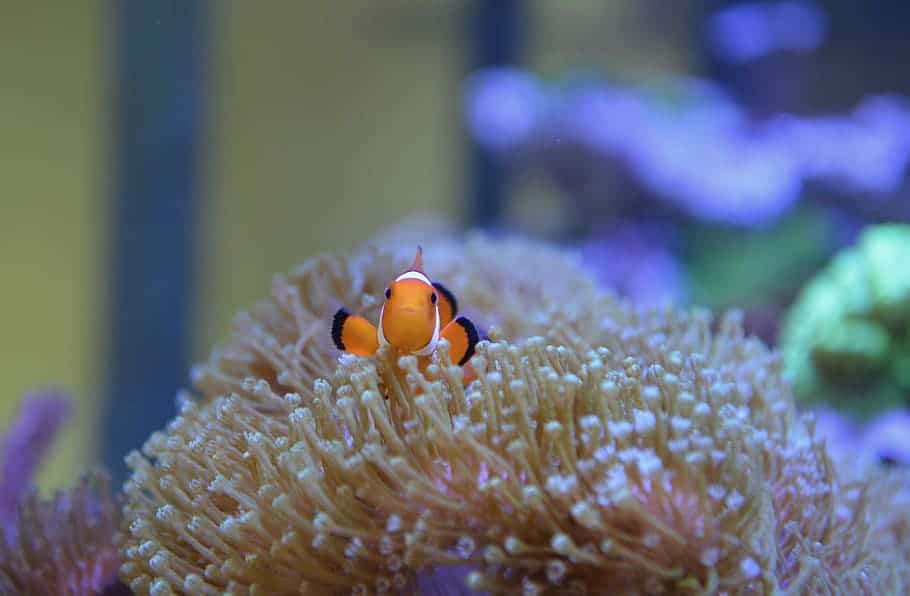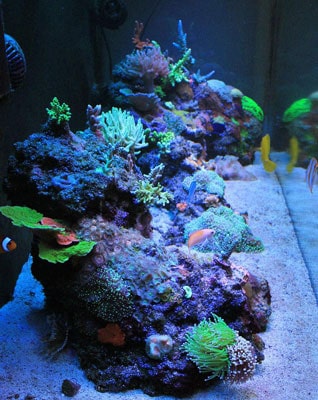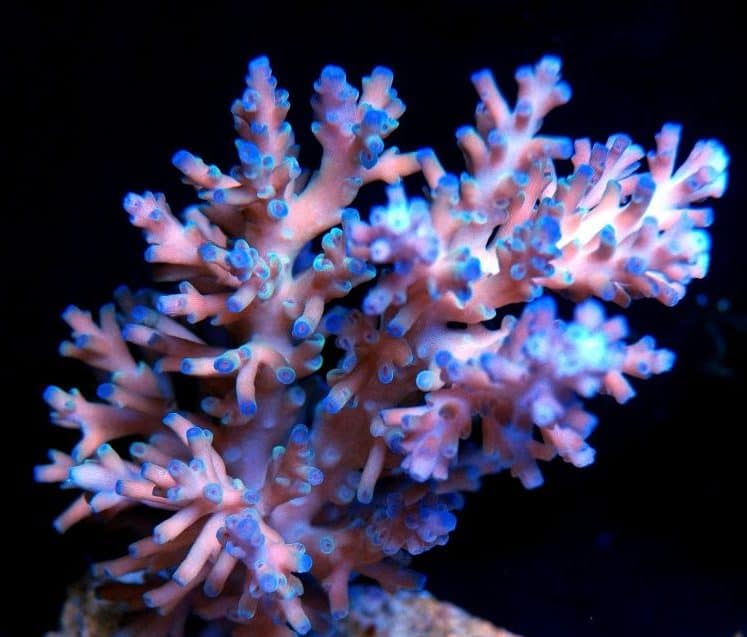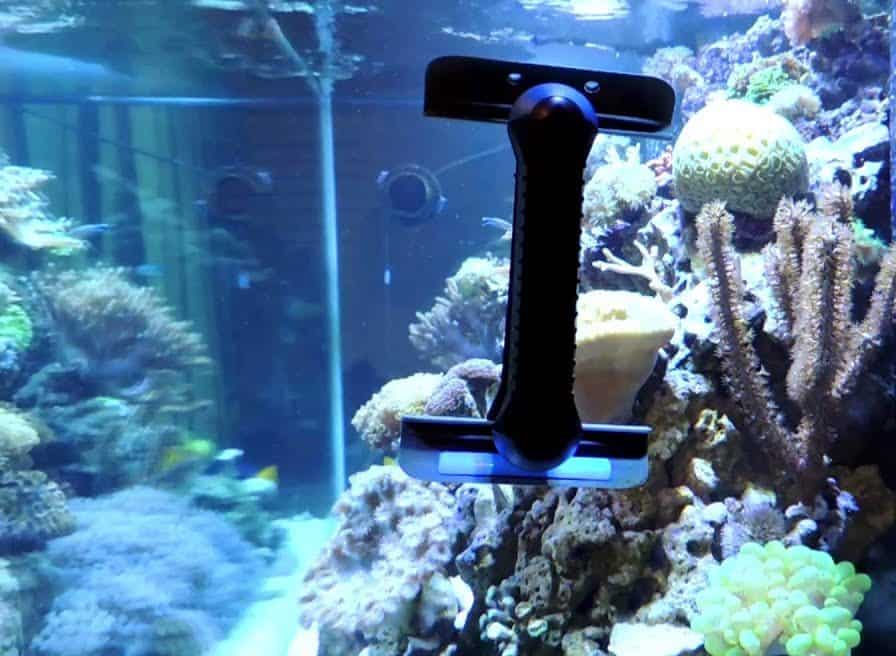Every aquarist faces this conundrum when they start a new aquarium. The maintenance routine you adopt is usually based on the answer to this question.
When you change the water, you will usually do all the other maintenance associated with cleaning and maintaining your aquarium. Floss change, glass cleaning, skimmer cup cleaning, sand vacuuming etc.
On average, popular water change frequencies with aquarium owners are 10% of the total water volume each week, or 20% every two weeks, or 25% once per month. If the aquarium is heavily stocked and/or the fish get overfed then these volumes should be doubled to ensure the aquarium remains healthy.
Stability is the key to a successful aquarium and regular, high-quality water changes will form the basis to a great reef tank. Read on to find out why…
How Often Should You Change Water In An Aquarium?
Ask 100 aquarium owners and you may find 10 different answers! Everyone has their own theories and lifestyle or time to dedicate to their aquarium will influence their decision.

Below is a series of charts showing the most popular frequencies and volumes used by most aquarists. The results were collated from polls I conducted on many of the forums and social media groups I belong to:
Typical Water Change Frequency:
| Water Change Frequency | % of Aquarists |
|---|---|
| Daily | 7% |
| Weekly | 35% |
| 2x Per Month | 26% |
| Monthly | 17% |
| 4x Per Year | 6% |
| 2x Per Year | 4% |
| Annually | 2% |
| Never | 3% |
Along with the majority of aquarium owners, I change a percentage of my water every week for reasons I will discuss later in the article.
How Much Water Should Be Changed In An Aquarium?
Keeping your water in peak condition is one of the reasons why you want to change water and the longer the period between changes the more volume you should replace.
Little and often is more stable than large and lengthy.
Here is a general recommendation of water volumes to change based on your frequency.
Typical Water Change Volume:
| Water Change Frequency | Water Volume Changed |
|---|---|
| Daily | 1% – 2% |
| Weekly | 10% – 15% |
| 2x Per Month | 15% – 20% |
| Monthly | 25% |
| 4x Per Year | 25% – 35% |
| 2x Per Year | 25% – 35% |
| Annually | 25% – 40% |
As I stated, my water change frequency is weekly and I change approximately 10%. My saltwater aquarium system comprises of a 75 gallon display tank, 20 gallon Long sump and a modified 8 gallon frag tank. Taking into account displacement for sand, rock, equipment, and the sump and frag tank not being full to the brim, I base my system volume on around 90 gallons total.

Your total system volume is what you want to base your water change volume on. If you have a 12 gallon All-In-One Aquarium then a one gallon water chance each week will be roughly 8%. 1.5 gallons will be around 12%.
Whereas a 120 gallon aquarium and 50 gallon sump could have a total water volume of around 150 gallons, therefore you would be looking at around 15 gallons of new water every week for a 10% water change.
Why Should Aquarium Water Be Changed?
Our aquariums are a closed eco-system and it is up as the owners to ensure that the water is kept in as pristine quality as possible. If you keep your water of the highest quality, then the rest of the inhabitants will thrive.
As technology advances, so do the filtration equipment and techniques we employ to help extend the life of good quality water and prevent the build-up of harmful toxins and elements. The reliance on filtration alone though is not good enough to completely offset the benefits of a good water change.
Some of the Main Benefits & Jobs of a Water Change are:
Reduction of Nitrogen-Based Toxins – Ammonia, Nitrite, and Nitrate will all begin to build when the Nitrifying Bacteria are unable to cope with the demand on the biological filtration. Overstocking, overfeeding or a dead & decaying animal can put a sudden strain on the bacteria and water changes will help to physically export these toxins.
Replenishment of Consumed Chemical Elements – This becomes important once you begin to place coral into your aquarium. Corals with a hard skeleton will begin to rapidly consume Alkalinity, Calcium, Magnesium, Strontium and other trace elements as they grow.

Frequent water changes will help to replace these elements and prolong the costly additional supplementing that will be needed once water changes alone are not enough to keep up with the corals’ consumption.
Removal of Detritus & Decaying Organic Material – Before changing water is always a really good idea to clean your glass, blast your rocks with a turkey baster to disturb settled detritus, and vacuum the sand bed.
By getting all the waste material into the water column it allows it to be physically removed during the water change before it has the chance to break down into Ammonia, Nitrite & Nitrates.
Ensuring Water Clarity – Algae spores, waste particulate matter, and odors from the home environment can lead to discolored or cloudy water which does two things:
- Makes the water look dirty and not have the sparkle your aquarium deserves.
- Prevents light energy penetrating further into the water and the corals based lower on the aquascape or sandbed will receive less light to photosynthesize and create energy.
Using Activated Carbon helps to combat these discoloring items but by changing water more often you can help to extend the life of the carbon filter material.
Some Of The Sub-Benefits Of An Aquarium Water Change Are:
Most aquarists will do their tank maintenance when doing a water change, yes, cleaning the glass is usually done every day or so but how often do you get in and have a good look at all your equipment?

This is one of the main reasons I’m a great believer in weekly water changes. I find it helps with the following:
- Keeps the water more stable with only small volumes changed
- It gives me a chance to test my water parameters before the water change and spot any potential problems developing
- It allows me to remove organic waste and matter before it has a chance to break down
- It allows me to give all my equipment a good inspection
I have found many a potentially ‘Tank-Crashing’ problems before they had a chance to happen, all because I was glancing around my equipment.
Are There Any Essentials When Changing Aquarium Water?
The water change schedule and volume you set yourself is just one part of the water change process. There are some other very important elements you want to be aware of that make the water change as effective as possible:
Use Good Quality Water – Unfiltered water from the tap is likely to be loaded with Nitrates, Phosphates, and Chloramines. These are going to feed the algae and turn your reef into a planted tank! As soon as you can, invest in a good quality RO/DI water filter. See my link at the end of the article for more information on selecting one.
Use Good Quality Salt – When you run a marine tank salt is not cheap but you definitely get what you pay for. Ensure you use only good quality synthetic salt mixes especially for saltwater aquariums. They contain many of the trace elements to ensure your ecosystem gets all the good stuff it needs.
Mix The New Water Thoroughly – Ensure your salt and water are mixed thoroughly before placing it into the aquarium. Most salt manufacturers recommend anything from a few hours to a day to ensure all the salt is saturated into the water. Allowing clumps of salt to fall into the aquarium can burn coral skin and if ingested by a fish will kill it if its a large enough particle.
Use Good Quality Testing Equipment – If your testing equipment is giving you inaccurate results then you will be constantly chasing your tail and could lead to a water parameter to become dangerously out of tolerance. The most basic pieces of equipment you will need are a good digital thermometer and a refractometer. See the additional articles below for more information.
Identical Water Parameters – This has to be the most important part of your water change! Ensure the water you put in is identical to the water you took out, especially so in temperature, salinity, and Ph. If you are trying to slowly raise your salinity for instance, then make your new water very slightly higher and introduce it back to the aquarium SLOWLY.
The Only Thing That Happens Fast In A Saltwater Aquarium Is A Tank Crash!
Further Reading
To help you further your knowledge you may find the following articles helpful:
- Saltwater Aquarium Water Change – Your First Time
- How To Measure Salinity In An Aquarium
- How Long Can Mixed Saltwater Be Stored?
- Saltwater Storage Containers – Not All Are Safe!
- Best Test Kits For Saltwater Aquariums
- How To Select An RO/DI System For Your Aquarium
- How To Clean Aquarium Glass Without Scratching

